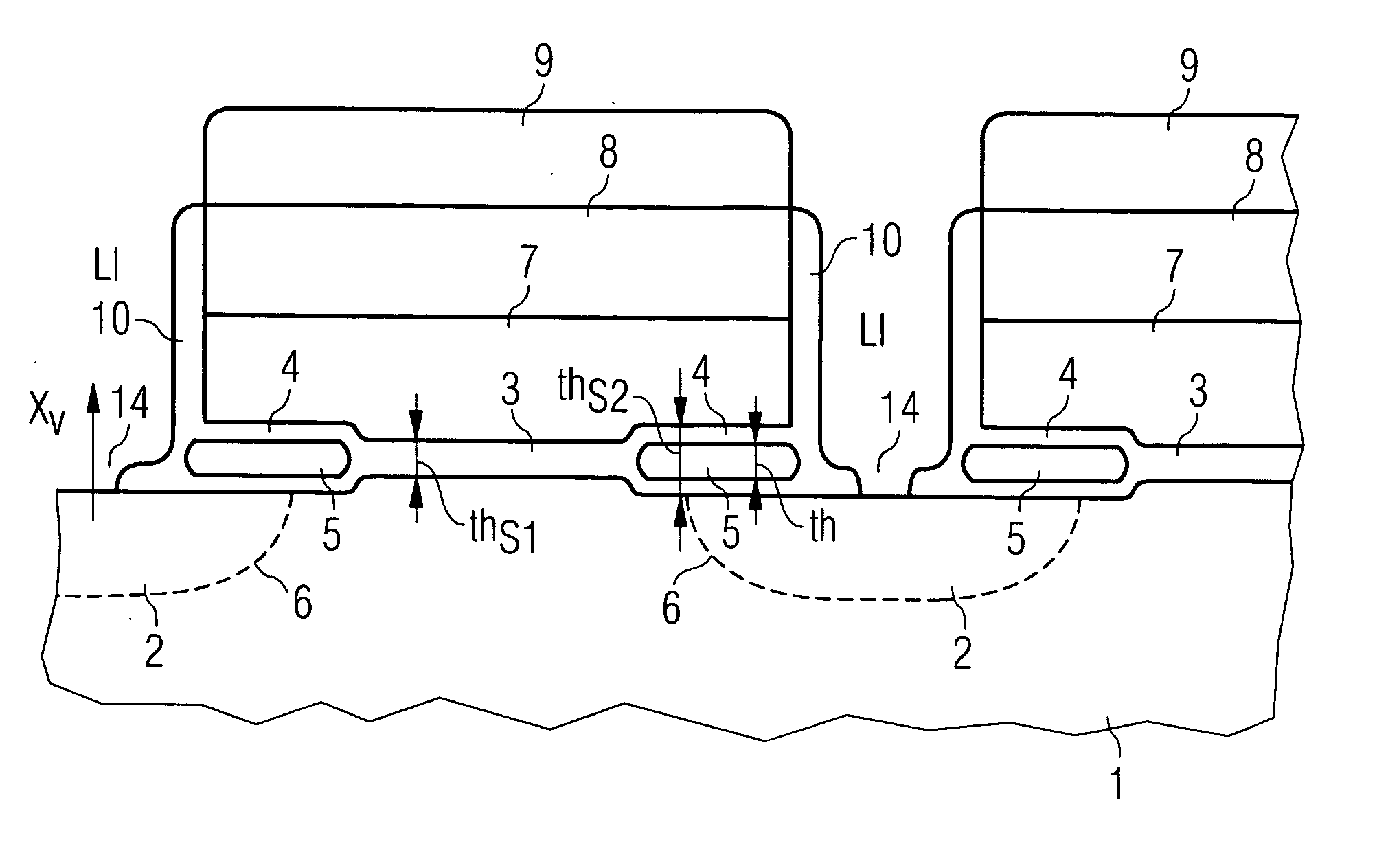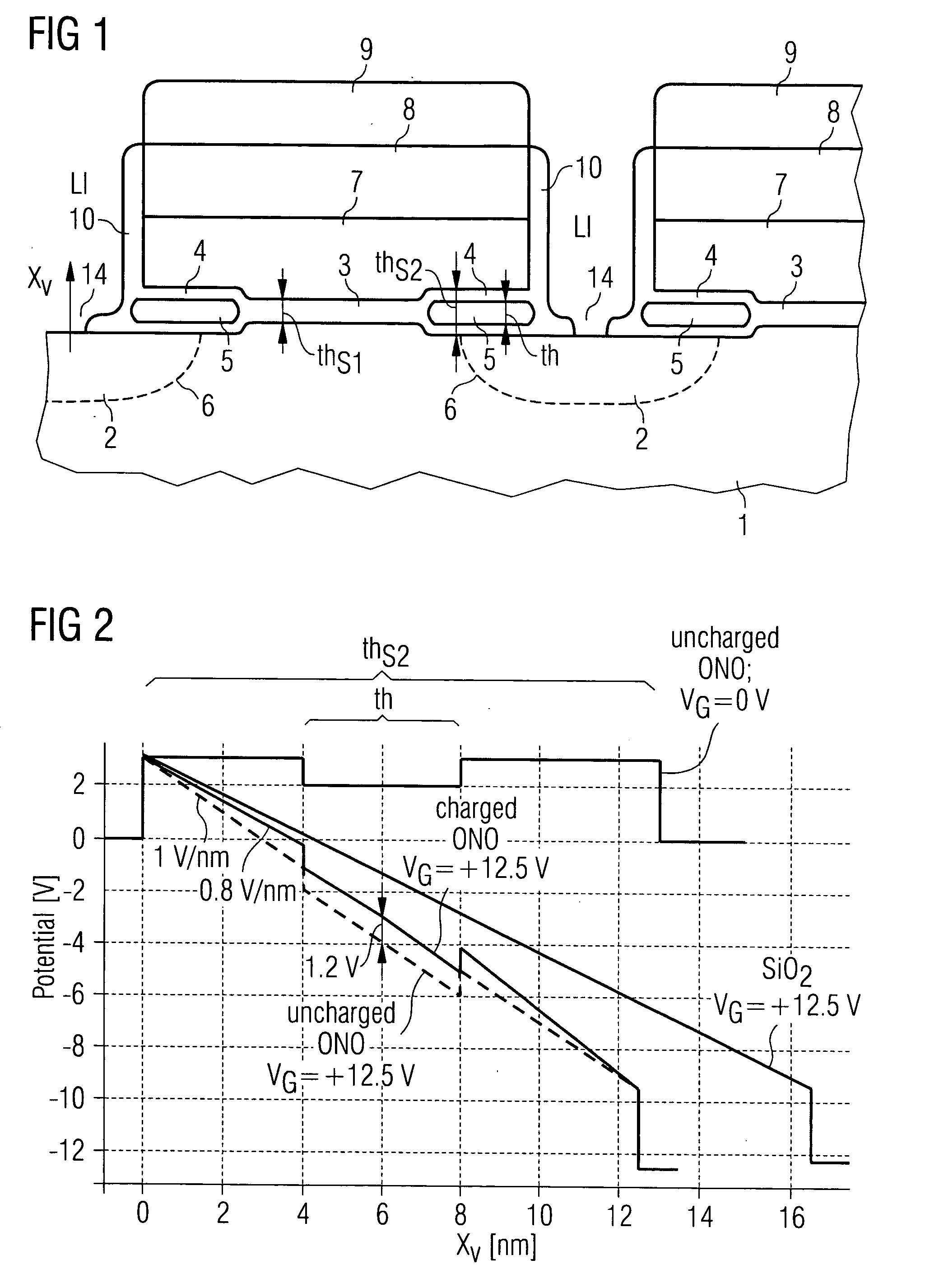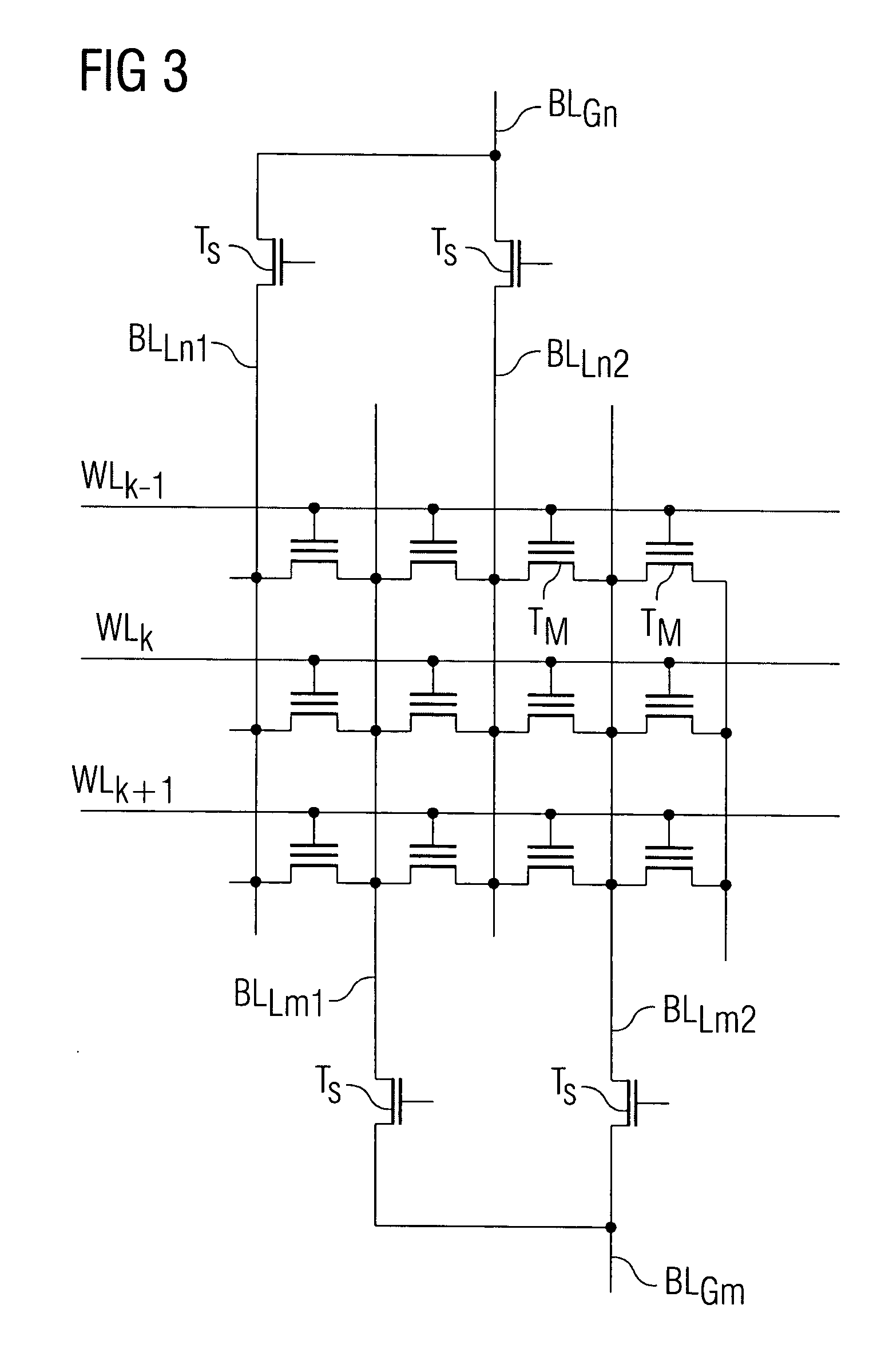Charge-trapping memory device and methods for operating and manufacturing the cell
a memory device and charge-trapping technology, applied in semiconductor devices, transistors, instruments, etc., can solve the problems of not being able to shrink the cell to sub-100 nm technology, deteriorating the performance of the memory cell with an increasing number of programming cycles, and not being advantageous for scalability, so as to achieve less degradation, improve reliability, and reduce the amount of charge injected in the single gate dielectric above the middle channel region.
- Summary
- Abstract
- Description
- Claims
- Application Information
AI Technical Summary
Benefits of technology
Problems solved by technology
Method used
Image
Examples
Embodiment Construction
[0022]FIG. 1 shows a cross-section of a preferred embodiment of the memory device. In a semiconductor body 1 or substrate, preferably p-doped, source and drain regions 2 are formed by doped regions, preferably n+-doped. A gate dielectric 3 is arranged on an upper surface of said semiconductor body 1. The gate dielectric 3 is a single layer above a middle section of a channel region located between source and drain regions of the same memory cell. At both ends of the channel, the gate dielectric is structured as a charge-trapping layer sequence 4 comprising a charge-trapping layer 5 formed by two strips 5 of a material having a higher relative permittivity or relative dielectric constant than the material of the gate dielectric 3. For example, if the gate dielectric is silicon dioxide, the material of the charge-trapping layer 5 can be silicon nitride. The strips of the charge-trapping layer 5 are located above upper boundaries of junctions 6 that are designated by dotted lines in FI...
PUM
 Login to View More
Login to View More Abstract
Description
Claims
Application Information
 Login to View More
Login to View More - R&D
- Intellectual Property
- Life Sciences
- Materials
- Tech Scout
- Unparalleled Data Quality
- Higher Quality Content
- 60% Fewer Hallucinations
Browse by: Latest US Patents, China's latest patents, Technical Efficacy Thesaurus, Application Domain, Technology Topic, Popular Technical Reports.
© 2025 PatSnap. All rights reserved.Legal|Privacy policy|Modern Slavery Act Transparency Statement|Sitemap|About US| Contact US: help@patsnap.com



